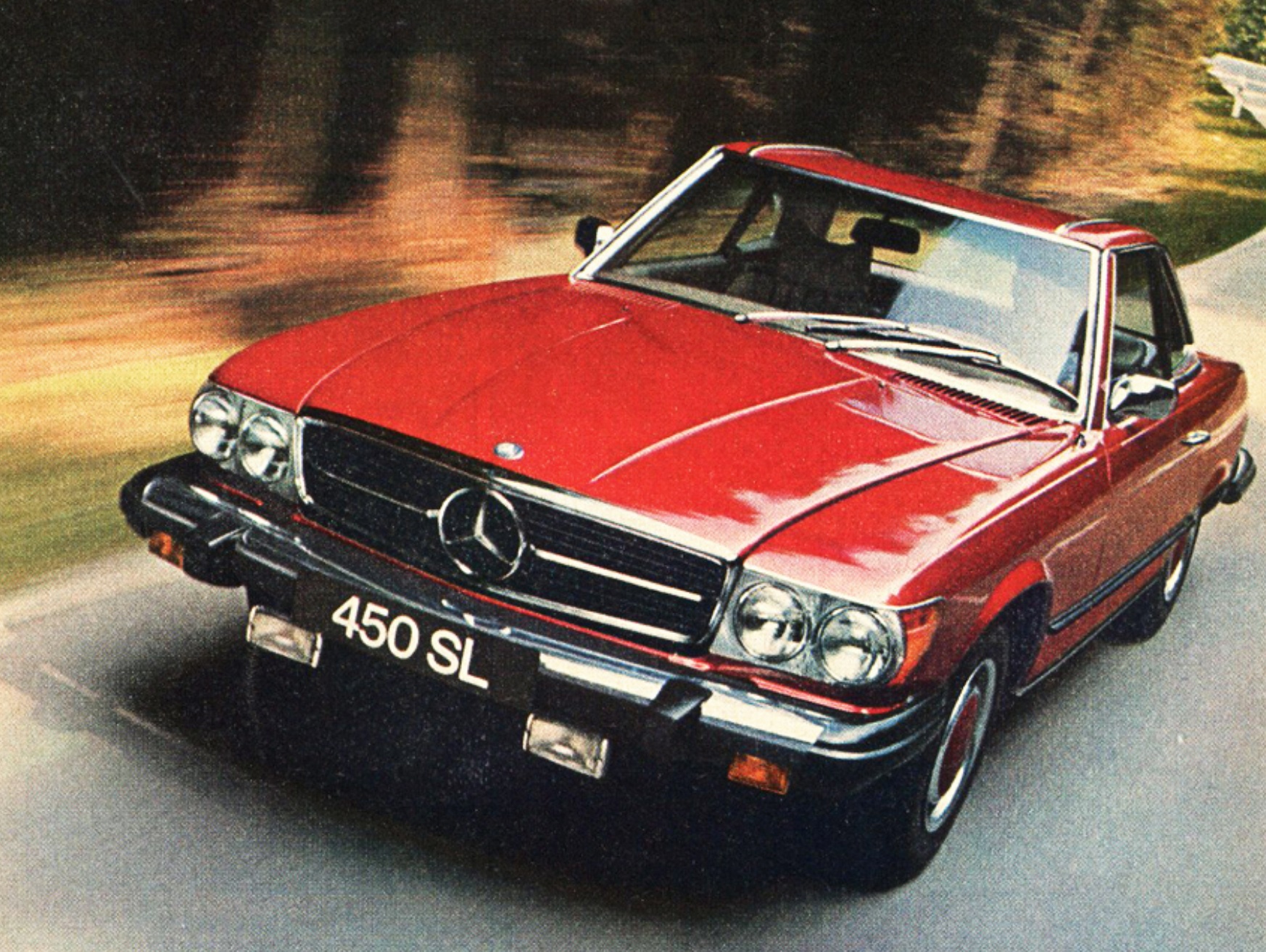

It is a true honor to join the editorial team at FCP Euro from the Desert Southwest of the United States. Today we launch a series on the Mercedes-Benz, R107 chassis, covering topics such as what to look for in a potential purchase, restoration, and mechanical aspects.
Over the next months however, we will be focusing in great detail on one model in particular; the 1975 Mercedes-Benz 450SL. You will have a unique opportunity to "go along for the ride” as we restore this magnificent car, and I look forward to brining this Grand Touring (denoted by the “S” in “SL”) Mercedes R107 Convertible/Coupe back to life.
As we begin our journey, I have compiled a very basic overview of the R107 SL line. By understanding the simple basics of this car, it will serve as a guide when working on your SL. Whether you are the DYI mechanic or have it serviced, it is invaluable to have foundational knowledge as you enjoy and care for your SL.
THE HISTORY
MODEL
Mercedes-Benz R107 Chassis,
Known as “The Panzerwagen” or “The Armored Car” and reasonably so, due to it’s exceptional weight.
Note: For the purpose of this series, I will only focus on the SL and will exclude the SLC variant. While similar, there are enough significant differences (body/interior) that it would only serve to confuse as we move forward.
TOTAL SL UNITS BUILT
237,288 (The United States received about 2/3 of the total produced) About 6,000 units were produced annually between 1971-1989. Total 1975 SL unites built: 7,421
ASSEMBLED IN
Sindelfingen, West Germany, East London and South Africa
ENGINE BY MODEL YEAR
- 350 SL: 1971—1972, 3.5 L V8* (200 hp)
- 450 SL: 1972—1980, 4.5 L V8* (222 hp)
- 280 SL: 1974—1985, 2.8 L V6** (182 hp)
- 380 SL: 1980—1986, 3.8 L V8* (215 hp) - Aluminum engine block introduced
- 500 SL: 1980—1986, 5.0 L V8* (240 hp)
- 560 SL: 1986—1989, 5.6L V8* (287 hp)
90° Vee. - *Inline 6 cyl.
Transmission:
The 3-speed automatic was upgraded to the 4-speed automatic in 1981.
Fuel System:
1973-1975 Bosch D-Jetronic. 1976-1979, Bosch K-Jetronic. 1980-1984 Bosch K-Jetronic with Lambda and from 1985-1989 Bosch KE-Jetronic
Vehicle Weight
3675 lbs.
0-60 Time:
9.5 seconds
U.S.A. SPECIFICATIONS & OPTIONS
Headlamps:
U.S. versions were fitted with round twin (four total) sealed beam headlamps, while the European version sported a single (rectangular flush mount) headlamp (two total) with separate bulb. The U.S. eventually allowed for the single headlamp style, but Mercedes opted to continue the twin lamp design for the U.S. market.
Bumpers:
Beginning in 1974, the Euro bumpers, those affixed directly to the body, were changed to meet U.S. Federal Government crash safety standards. The bumpers were extended out at the front and rear to an addition 8 inches (203mm) and mounted on shocks to allow for a 5 mph (8km/h) crash.
Emissions:
1975 began the first generation of U.S. EPA emissions regulations. The ’75-‘76 were the first of the SL chassis to receive catalytic converts. This addition however, was the cause of some frustration for some living in hotter climates. SL owners in the Desert Southwest (Arizona, Nevada, southern California,) and the deep south (Texas, Florida, etc.) regularly suffered vapor lock during the summer months, making restarting very difficult or impossible until the engine sufficiently cooled down. Mercedes-Benz subsequently recognized the problem and moved the duel catalytic converters, attached to each of the manifolds, downstream by 1977. The new single, duel flow catalytic converter which took the place of the resonator. In subsequent articles, we will discuss the exhaust conversion process should you have vapor lock issues.
NOTE:
Beginning in 1975, two variants were shipped to the U.S. known as the Federal version and the California version. Both variants have fairly significant differences as it pertains to various engine components. If you are uncertain which model you have, you should always look at the manufacturing plate on the drivers side door jam. In as much, always check you specific model and VIN/engine number before ordering parts. FCPeuro clearly denotes part numbers that are required for each model and chassis number.
PURCHASE OPTIONS
Hard Top and Seating:
The 450SL was a 2 seater convertible roadster with an optional hard top, making the car a coupe. A folding rear seat for “two” with seatbelt was also an option. While the rear “seat” would be able to hold two adults in a dire emergency, it is truly only sufficient for pre-teen children.
Wheels:
From 1971-1977, the 450SL was delivered with steel wheels and the traditional painted, color matched wheel covers. For an an additional charge however, one could opt for the 14 in. alloy chrome plated or standard satin finish wheels. These optional wheels, also known as “Bundt” rims in the U.S., or, in German “Barock Felgen” or Baroque Wheels. These wheels became very popular for several decades across the entire Mercedes line up. In 1981 the 14 in. “Bundt” wheels were standard equipment.
Automatic Climate Control
In 1978 automatic climate control was introduced as standard equipment. This system can prove to be frustrating however, as the many servo motors and computer driven system can suffer with age. While the manual knob and lever system of the previous years were archaic, the system was robust and easily repaired in the event of a failure.
While Mercedes-Benz kept the SL series nearly unchanged cosmetically throughout it’s 18 year run, upgrades, options and new standard equipment continued to be added. For example, in 1981 digital Becker radios replaced the “vintage” analog Becker system. For the 1986 model year Mercedes introduced as standard equipment a 4-speed automatic transmission, drivers air bag, antilock brakes, aluminum hoods, and updated interiors.
The 450SL can be a fantastic option as an entry vehicle into the classic car market, however there are definitely many things to consider before purchasing. Next week we will cover some of the expected and some very unexpected expenses you will face in ownership.











